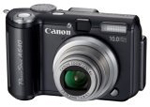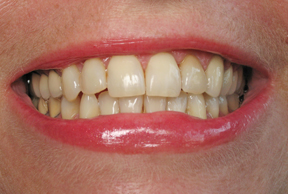Canon A630 and A640

|
||
 |
||
The Point and Shoot Canon A630 and A640 are both excellent cameras for their size and cost. One word of caution is that these cameras are small, and those with large hands may find working with them a bit awkward. For those who may be intimidated by the larger SLR cameras and/or have smaller hands, these cameras are good choices. They both have bright 2.5" LCD screens with 8mb (A630) and 10mb (A640).
PhotoMed has created a plexiglas diffuser with a close-up lens for the Canon A630 and A640 that works great for close-up and intraoral photos. For full face smile portraits you will need to remove the diffuser because the close-up lens will not focus at longer distances. The lens extension tube, macro lens and diffuser are effectively one piece. To remove it, you simply press the button next to the lens and turn the attachment. Everything comes off together. For intraoral photos the camera and diffuser combo works great for front and side views of the teeth.
The following is from Mike McKenna of PhotoMed "The A-Series Canon cameras yield virtually the same amount of depth of field as the SLRs. The camera states that the minimum aperture is f8, but this is not the same f8 from an SLR. We are finding that the depth-of-field of the A-Series cameras is roughly the same as an SLR shooting between f16 and f19."s
Put mouse over photo for a larger view

Put mouse over photo for a larger view
My comments on the above cameras and accessories are meant to help simplify and demystify what can be an overwhelming amount of information on digital cameras. There are certainly many options available, and my recommendations of these do not exclude other equipment that may be very good for dental photography as well. I will continue to keep a watchful eye on new developments. Please feel free to contact me if you have any comments or questions on this article.
I look forward to hearing from you! - Sam




